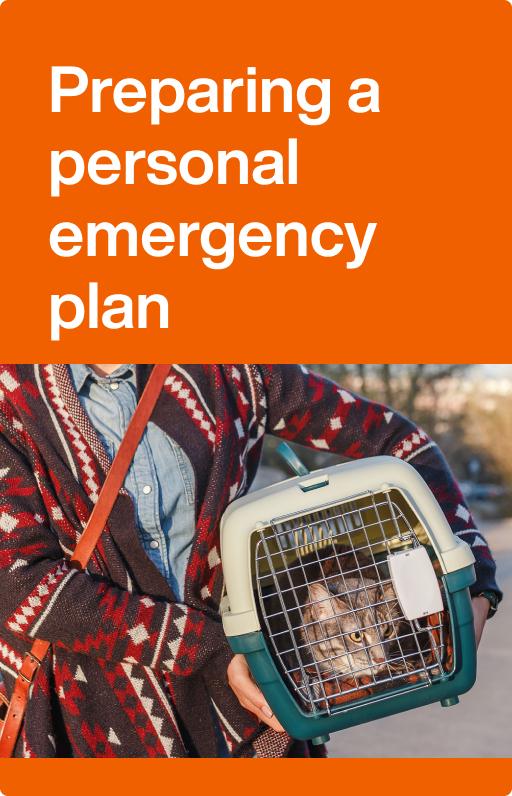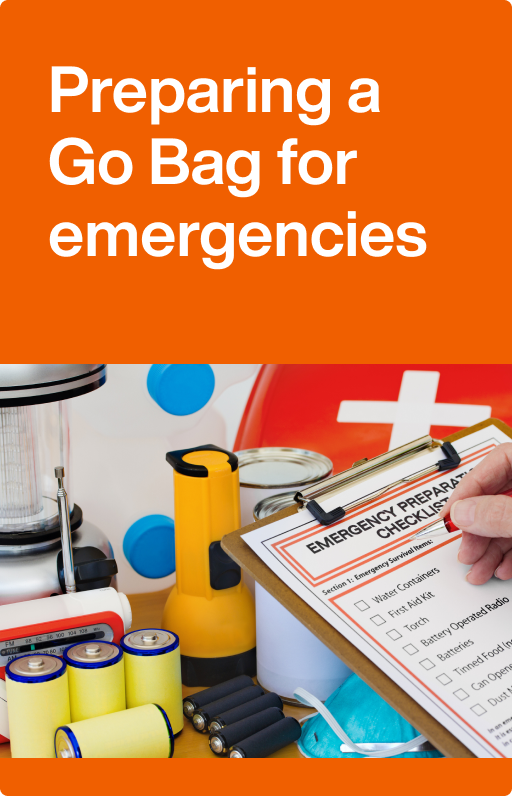Preparing a personal emergency plan
If you know what to do, you are much more likely to make the right choices.

How to develop your plan
Create a personal emergency plan for your family or close friends covering what to do, where to meet, where to go and how to communicate.
A personal emergency plan outlines what you and your family or close friends will need to do in an emergency. Read, review and rehearse your plan so everyone knows how it works and make sure everyone, even the babysitter, has a copy.
- Discuss what sort of events may affect your family and friends. These might include storms, power failure, fire and earthquake.
- Work out how you would respond to each emergency, for example should you evacuate or remain inside?
- Discuss how you would evacuate from each room of your home, from your building and from the neighbourhood. Know your workplace procedures as well.
- Identify safe places in your home away from windows where you can shelter in place.
- Know where your home’s water, electricity and gas shut-off points are, and how to switch them off safely.
- Create a Go Bag.
- Decide where you and your family or friends will meet after an emergency.
- Create a contact list. Choose someone who lives in a different area to be the contact person for your family. In an emergency, it’s often easier to contact someone outside the area, who can pass on messages to the rest of your loved ones.
- Make sure you have adequate household insurance.
- Go through your emergency plan at least twice a year. Your emergency plan is only effective if everyone knows how it works.
- Landline numbers and mobile numbers of children, partners, close friends and carers.
- Up-to-date information about each family member, partner or close friends including important medical information.
- Name, phone number, address and evacuation location details for all places frequently visited by your family members, partner or close friends. This could include workplaces, schools and childcare locations.
- Name and phone number of your doctor and insurance policy details.
- Contact details for key people at work, such as your boss and key colleagues including both mobile and home phone numbers.
The more prepared you are, the calmer you will be in an emergency. During an emergency authorities may ask you to evacuate your home or workplace or to remain inside the building. These instructions may be from emergency services personnel, other authorities or your building managers.
If you have to leave the building:
- Respond quickly. Leave all non-essential items behind. Having a Go Bag ready will make it easier to take all your important items with you.
- If you have any neighbours who need help evacuating, check on them first.
- If it is safe to do so, take your pets with you. Put large pets on a leash, even if you don't normally use one. If you not have a suitable pet carrier you can carry your cat in a cardboard box with a lid – don't forget to make breathing holes in the box.
- If you need to evacuate immediately, just lock your door behind you. If you have time, turn off electricity, gas and water supplies, unplug appliances and lock all doors and windows. Listen to all instructions from emergency personnel.
- During an emergency it's easy to lose track of family and friends. If you have a personal emergency plan, meeting up again will be much easier.
- In a major disruption, roads may be closed, public transport may not be running and mobile phone networks may be congested.



